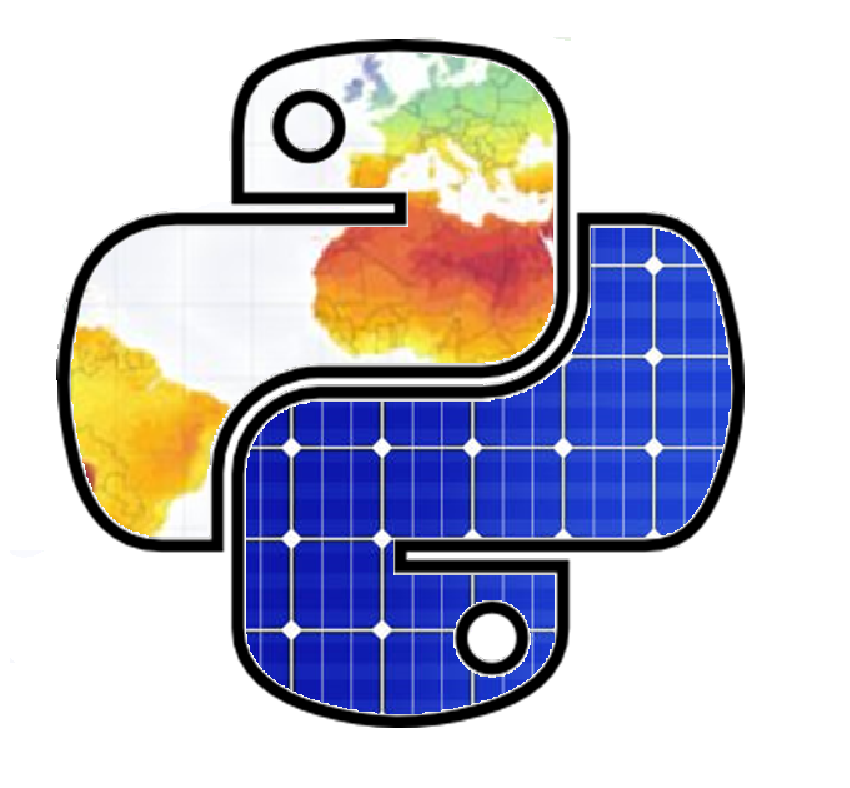Dew on radiometers#
Dew on radiometers cause a deviation of the measured irradiance compared to the true value.
This issue is most often observed during the morning on cold days for unventilated and unheated pyranometers.
The issue of dew on pyranometers is illustrated in the image below, which shows a shaded pyranometer with dew and unshaded pyranometer without dew. The photo was taken at the DTU Climate Station in Copenhagen (January 12th 2021).
The reason that dew remained on the unshaded pyranometer is that the direct irradiance on the unshaded pyranometer had caused the dew to evaporate although this process is not instantaneous and the unshaded pyranometer also had been affected earlier in the day.

Impact of dew#
Let’s take a look at some irradiance measuremens from DTU’s Climate Station and see if we can observe this phenomenon.
import numpy as np
import pandas as pd
import matplotlib.pyplot as plt
import pvlib
# sphinx_gallery_thumbnail_number = 2
filename = '../notebooks/data/solar_irradiance_dtu_2019_extended.csv'
df = pd.read_csv(filename, index_col=0, parse_dates=True)
# Calculate Global Horizontal Irradiance (GHI) from Diffuse Horizontal
# Irradiance (DHI) and Direct Normal Irradiance (DNI) using the closure
# equation.
df['ghi_calc'] = df['dhi'] + df['dni']*np.cos(np.deg2rad(df['zenith']))
df['is_daytime'] = df['zenith'] < 90
df['hourofday'] = df.index.hour
# Compare the calculated and measured GHI:
df.plot.scatter(x='ghi', y='ghi_calc', s=1, alpha=0.5, grid=True)
plt.show()
Zooming in at the low irradiance region, it is possible to detect swirling lines, where measured GHI is initially higher than the calculated GHI and then the reverse occurs.
df[df['is_daytime']].plot.scatter(x='ghi', y='ghi_calc', s=1, alpha=0.5,
grid=True, xlim=(-10, 400), ylim=(-10, 400))
plt.show()
For a closer inspection of the data, let’s find a specific day where this phenomenon is pronounced. As an example we’ll look at May 11th 2019.
df['2019-05-11 03':'2019-05-11 20'].plot.scatter(
x='ghi', y='ghi_calc', s=1, grid=True, c='hourofday', cmap='plasma',
sharex=False)
plt.show()
From the above plot, it’s clear that this phenomenon occurs in the morning. Let’s see if we also can see the issue in the raw measurements for the same day:
df.loc['2019-05-11 03':'2019-05-11 20',
['dni', 'ghi_calc', 'ghi', 'dhi']].plot(grid=True, alpha=0.5)
plt.show()
The wobbly nature of the GHI measurements is clearly not realistic but is caused by dew. In the beginning of the morning the measured GHI is reduced but then as the dew evaporates, more irradiance is focused onto the GHI sensors and consequently the measured irradiance is overestimated.
Let’s attempt to see if we can detect the dewy periods using a traditional Kd vs. Kt plot. This type of plot is commonly used in quality assessment of irradiance measurements.
df['Kd'] = df['dhi'] / df['ghi']
df['dni_extra'] = pvlib.irradiance.get_extra_radiation(df.index)
df['ghi_extra'] = df['dni_extra'] * np.cos(np.deg2rad(df['zenith']))
df['Kt'] = df['ghi'] / df['ghi_extra']
df['2019-05-11 03':'2019-05-11 20'].plot.scatter(
x='Kt', y='Kd', grid=True, xlim=(0, 1.1), ylim=(0, 1.1), s=5,
c='hourofday', cmap='plasma', sharex=False)
plt.show()
The irradiance measurements affected by dew are within the zone of valid data, thus this type of plot does not seem to be useful for detecting periods with dew.
Pyrheliometers#
Pyrheliometers are much less affected by dew due to their smaller view of the sky hemisphere. The rain shield, which is typically mounted on the front of a pyrheliometer, also helps reduce the long-wave radiation exchange with the sky. Additionally, when there is direct irradiance, the dew on a pyrheliometer is typically evaporated faster than on a pyranometer. In short, dew is less common on pyrheliometers although it can be observed.
